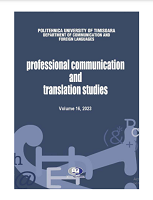ARE EASY-TO-READ TRAINING AND STANDARDS IN SYNC?
ARE EASY-TO-READ TRAINING AND STANDARDS IN SYNC?
Author(s): Rocío Bernabé, Óscar GarcíaSubject(s): Education, Vocational Education, Higher Education , Sociology of Education, Pedagogy
Published by: Editura Politehnica
Keywords: Easy-to-Read; skills cards; standards; training;
Summary/Abstract: After two Erasmus+ projects researching the competencies of Easy-to-Read professionals and two standards published - one international and one national, the question arises whether training and requirements are developing in sync. This article explores standards and skills cards that describe the competencies creators, facilitators, and validators of Easy-toRead content have or should acquire during training. Specifically, this case study seeks to identify whether the skills cards created during the Erasmus+ projects EASIT and TRAIN2VALIDATE account for the competencies set out in the international standard ISO/IEC DIS 23859-1 Guidance on making written text easy to read and the Spanish standard UNE 153101 EX Easy to read. Firstly, the study uses primary and secondary data to determine the comparability of the standards and training programmes in terms of goals, processes, and professional roles. Secondly, the content is annotated to identify whether there is a common understanding of the knowledge, skills, and attitudes that professionals should demonstrate. The results show that standards and training programmes are developing in sync with training programmes showing a more comprehensive range of competencies, including working contexts and cross-functional areas, such as safety and hygiene.
Journal: Professional Communication and Translation Studies
- Issue Year: 2023
- Issue No: 16
- Page Range: 101-119
- Page Count: 19
- Language: English

